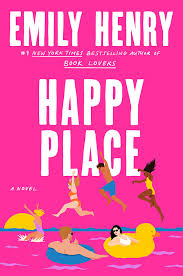Chapter 11: Unresolved Feelings and Emotional Tension
byIn Chapter 11, the protagonist and Wyn confront the unresolved feelings that have been simmering beneath the surface of their relationship, all set against the picturesque yet symbolic backdrop of their trip to Acadia National Park. What begins as an anticipated, leisurely day quickly spirals into emotional complexity as external chaos mirrors the internal conflict both characters face. The day was supposed to be simple—a trip to a favorite popover restaurant—but the unresolved feelings between the protagonist and Wyn force them to confront more than just the external disorder. The tension between the two serves as an indicator of how difficult it is to reconcile their past, and the narrative masterfully captures this through moments of frustration, confusion, and lingering attachment.
The pivotal moment comes when the protagonist and Wyn find themselves locked in a wine cellar together, a confined space that becomes a powerful metaphor for their emotional entanglement. Initially, the situation appears harmless, a mere accident, with the two engaging in light banter, but as time passes, the atmosphere changes. In this confined space, their interactions evolve from playful teasing to raw, unfiltered honesty. The uncomfortable proximity forces them to face not just the current awkwardness of their relationship but the unresolved feelings and the complexities of the past that neither of them has fully dealt with. The cellar, both physically restrictive and emotionally revealing, highlights the profound impact of their shared history and their inability to escape the lingering emotions that still bind them.
As they begin to open up to one another in the wine cellar, the tension between them escalates. They start discussing the intricacies of their breakup, exploring how both of them have been unable to fully move on, each haunted by the pain of their past connection. The shared memories of San Francisco and a coffee-table book become symbols of a time when things were simpler and filled with love, yet those symbols now represent the weight of what they’ve lost. Their conversation underscores the difficulty of accepting that things have changed, and it becomes clear that their bond, no matter how much it’s been strained, is not as easily severed as they would like to believe. This emotional vulnerability reveals how much they are still connected, despite the passage of time.
Throughout the chapter, there’s a constant back-and-forth between the two characters, who are both trying to navigate their way through unresolved issues and emotional scars. Their conversation about the breakup reveals the personal wounds they’ve both carried, like scars from the past that have yet to fully heal. The deeper they dive into these issues, the more they reveal about their own internal struggles—trust issues, unspoken desires, and feelings of betrayal—that have been pushed aside for too long. The physical closeness of the cellar mirrors their emotional proximity, highlighting the difficulty of separating the past from the present and pushing both characters to address the weight of their unresolved feelings.
The chapter concludes without offering any definitive answers, leaving both characters in emotional limbo. Although they’ve addressed some of the pain and miscommunication that led to their breakup, the future remains uncertain. The unresolved tension between them symbolizes the complexities of love and relationships, where emotional baggage often makes it difficult to fully move forward. The wine cellar serves as a representation of their emotional state: confined by their past, uncertain about their future, and unsure of how to navigate the space between love, loss, and potential reconciliation.
Ultimately, Chapter 11 beautifully illustrates the struggle to reconcile past emotions with the present. The narrative delves into the messiness of relationships, where healing and moving forward often come with painful reflections and honest confrontations. The emotional complexity of the chapter forces readers to understand how difficult it is to navigate love, friendship, and personal growth when you’re still tethered to your past. By ending with an unresolved tension, the chapter emphasizes the ongoing emotional journey of both characters, leaving readers questioning whether they will ever find resolution or if they are destined to remain stuck in their shared history.


